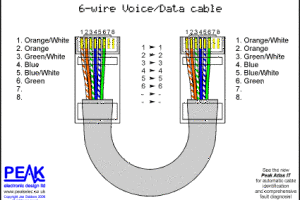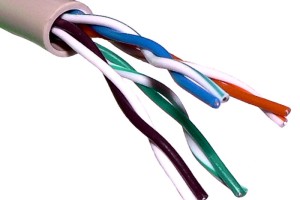Serpentine Technique
In the last ten to twenty years of cabling technology advances, cabling professionals have witnessed a good deal of change within their jobs. Particularly for structured cabling installation techs, skills and practices have gone through stages of development and modification. The standards of practice have been set forth by the ANSI/TIA/EIA-568-1991 Commercial Building Telecommunications Wiring Standard, which has been successfully updated several time since is was first established, keeping the regulations up to date. Many of the standards have to do with physical safety; keeping the technicians and civilians exposed to them safe from any possible danger. Some of this safety is day to day, while others consider more deeply the situations that arise in cases of emergency. Other standardizations help to insure the quality of the cabling: it’s ability to transfer information at speed, the preservation of signal strength and the efficient use of tools and materials towards the appropriate goals.
One example of how these practices have changed is the metamorphosis of the serpentine method. When running cabling for a network, large or small, it is important that the installer leave slack in the cable at specific points. This slack is usually not out in the open. Instead is is strategically placed behind walls or in technical closets. It is crucial to have for multiple reasons. First, if there is a change in the way the network is branched, excess will add for adjustments with as little splicing and building of cable as possible. Secondly, slack makes repairs easier and faster.
The question, as far as correct and preferred standards and practices are concerned, is how that extra cable is kept, stored and wired. There was a time when the cabling technology and information available drew the conclusion that looping and tying up this extra cable was the best way to store it. However as coaxial cable developed into multiple twisted pair cabling, encasing the cable signal with plastics and metals became less and less necessary. However, this new kind of cabling, while stronger and more efficient, has more troubles with physical signal interference. The looping method once used to store slack cable started to create problems for the new cable design. Looping the cord allowed for the creation of a self-made electrical current that can degrade and interrupt the flow of cable information. Therefore, a new storage method needed to be developed. The answer for coaxial cable, and for new fiberoptic technologies, is, in fact, the serpentine technique. This is a process in which cable is laid in many wide S shapes, thus utilizing less space to store more length of cable, while still keeping the cable from being pinched, or overlapping, which might interrupt the signals. Unlike a figure eight looping or a circular looping, the serpentine method maintained the structural integrity of the physical cabling, while maintaining the benefits of have slack cable for repairs and changes. This is one of many examples of how much and how quickly structured cabling technologies and practices are changing and developing side by side.




